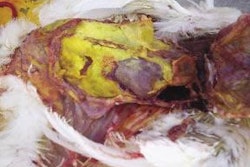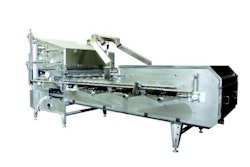This year, Egg Industry expanded the range of questions and solicited responses only from producers (see chart). We thank the more that 50% of those who responded. Questionnaires were processed by a disinterested aide, who entered values into a database with no identification as to origin.
The database was processed by a consulting statistician who developed summary tables and confirmed the validity of the responses. Analysis did not show any bias attributable to self-selection, non-response and withholding of information.
Survey information was supplemented by interviews with producers and allied industry contacts, generating an updated rank-order of companies.
Highlights of the 2008 survey are summarized in a series of charts:
The U.S. industry is largely generic in market orientation (FIGURE 1: Shell Egg Production Distribution).
Approximately 60% of shell eggs are sold in supermarkets; 20% to the institutional market (FIGURE 2: Shell Egg Market Breakdown).
In-line breaking represents twice the volume of off-line breaking, consistent with the production costs and yields from alternative systems.
The volume of consumer-packed pasteurized egg products among the respondents is four times greater than institutional and bulk liquid egg (FIGURE 3: Non-shell Egg Production).
Among the respondents, 45% said there would be no significant change in hen numbers; 51% anticipated an increase. Only 3% thought that a decrease in hen numbers was likely (FIGURE 4: Mean Predicted Changes in Hen Population).
Generally, our respondents expect 2009 prices to decrease. The expectation for six categories of shell eggs and products is shown in FIGURE 5: Anticipated 2009 Prices.
Reviewing items of concern, respondents ranked supply and demand, balance (profit) and welfare as most important. Feed cost and the regulatory environment ranked highly. Packaging and fuel costs were considered to be of lesser impact (FIGURE 6: Impact of Various Factors).
Respondents indicated that 638,000 hens would be added in 2009, with 80% in new buildings and the remainder in re-caged houses. In 2008, respondents reported placing 84% of 465,000 hens in new houses.
In 2008, 60% of non-caged housing was with contractors (FIGURE 7: 2008 Non-caged Housing). In 2009, expansion will be primarily in new company facilities (FIGURE 8: 2009 Non-caged Housing).
Aviaries in new houses represent the most important system for expansion of non-cage housing in 2009 (FIGURE 9: 2009 Non-caged expansion).



















